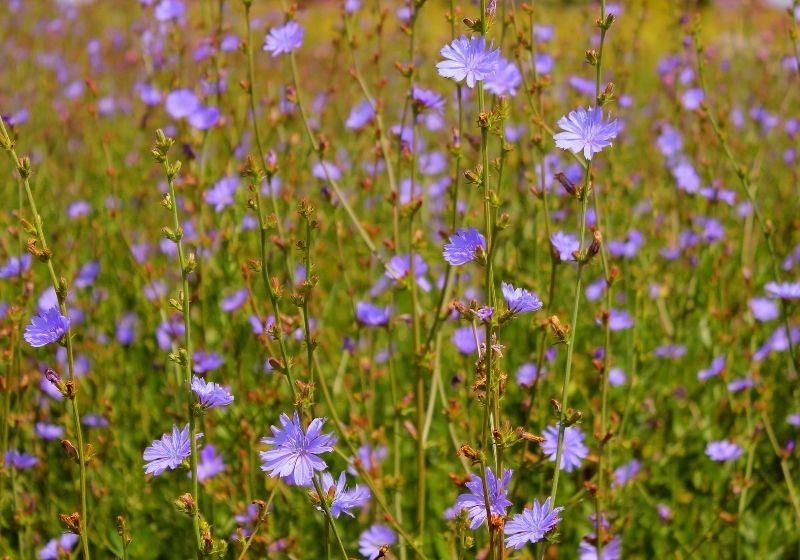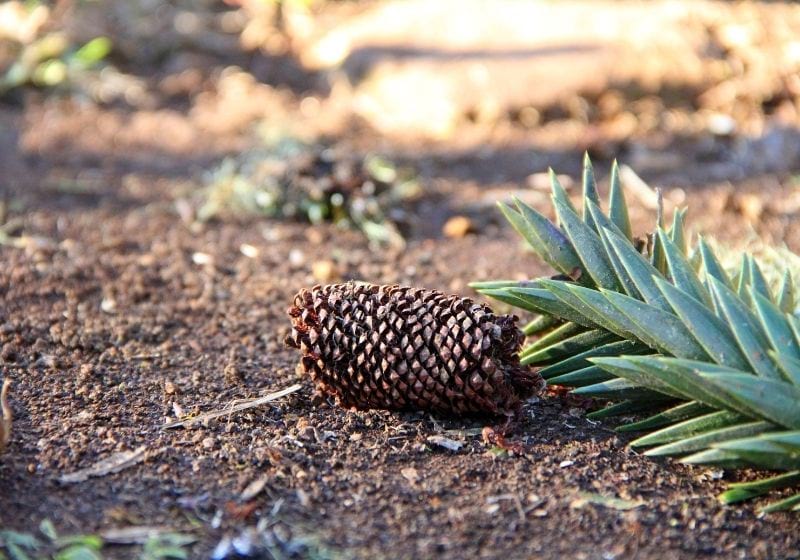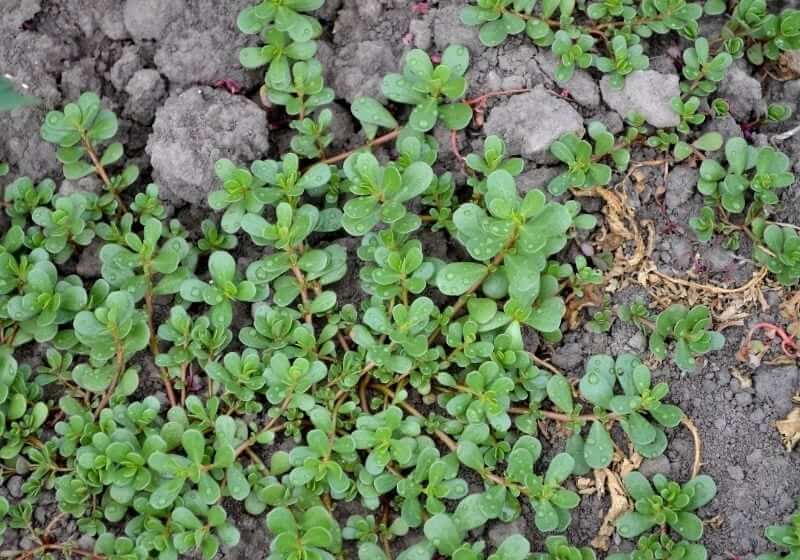Foraging
20 Edible Wild Plants You Can Forage For Survival

Foraging for edible wild plants is an invaluable skill for preppers as survival will often depend on eating what’s available. Lucky for you, the wild is a garden of free edibles waiting to be harvested as long as you know what to go for.
RELATED: Winter Foraging | Guide to Foraging Winter Survival Food
20 Edible Wild Plants You Didn’t Know You Can Survive on in the Wild
Click here to jump to the infographic.
1. Burdock

The burdock consists of big leaves and purplish flower heads that are thistle-like. Boil the leaves at least twice to remove their strong bitterness before consuming. You can also eat the stalks and roots raw or boiled as long as you peel them first.
2. Asparagus

The wild variety of asparagus is thinner than its grocery counterpart and tends to grow on damp soil with direct sunlight. It is edible, whether cooked or raw and leaves a distinct urine smell when consumed.
3. Lambsquarters

Lambsquarters are edible wild plants rich in vitamin A, vitamin C, calcium, iron, and protein. Its leaves have a milder taste compared to spinach.
4. Chicory

Chicory is a bushy plant that has small lavender, white and blue flowers. Its entirety can be eaten from its leaves to the roots. You can eat the flowers raw, but the roots give a pleasant taste after boiling.
5. Wild Ginger

Though eaten as a spice substitute today, you can transform its rootstocks into wild ginger candy by boiling when it down in a rich, sugary syrup.
6. Red Clover

The red clover consists of trefoil leaves and red, rounded flower heads. Besides eating, you can also use it for medicinal purposes for conditions such as high cholesterol and brittle bones.
7. Dandelion

The dandelion plant is entirely edible, from its roots to its leaves. Boiling removes its leaves’ bitterness. Moreover, you can use the flowers as a garnish when making a dandelion salad.
8. Kelp

Kelp is a form of seaweed and is rich in folate, lignans, and vitamin K. It produces a compound called sodium alginate which you can with dairy products, among many others.
9. Green Seaweed

You can eat green seaweed raw after rinsing with fresh water to remove its saltiness. You can also use it in making many dishes such as seaweed soup and sushi rolls.
10. Cattail

Cattail is mostly found near the edges of freshwater wetlands. Most of it is edible and was a staple diet of Native American tribes. The corn dog-like flower spike has a corn-like taste, but the best part is the stem.
RELATED: How To Use Tree Bark For Survival
11. American Elderberry

Use the purplish-black drupes of this edible wild plant to make jams and jellies. Ensure you cook it thoroughly before consumption as it can be poisonous.
12. White Mustard

White mustard is abundant in most parts of the world. It can be consumed from its seeds, flowers to its leaves.
13. Wild Rose

Wild rose plants can grow anywhere. It is a rich source of vitamins A and C, essential for birds and animals during the winter season.
14. Prickly Pear Cactus

The prickly pear cactus is delicious and nutritional but consider removing its spines on its outer skin. Boil the stems before consuming.
15. Miner’s Lettuce

The miner’s lettuce is usually used as a salad crop. It is heart-shaped, has slightly succulent leaves, and has a mild flavor. You can also safely consume its flowering shoots and leaves.
16. Chickweed

The chickweed’s leaves are hefty, along with small white flowers in the plant. It is high in vitamins and minerals. Eat raw or boiled.
17. Pine Nuts

Pine nuts are snacks that are edible straight from pine cones. It is also a favored snack of woodland creatures such as squirrels and birds.
18. Fireweed

The fireweed plant has red-stemmed flowers that usually pop up in areas that recently suffered wildfires, hence its name. Its reddish stalks and pinkish to purple flowers are edible, especially at its earlier stages.
19. Bamboo

The bamboo’s edible parts are the stout and rotund buds, which have been a staple Asian food for centuries. It contains toxins that are lethal when eaten raw hence the need to boil it first.
20. Purslane

Though purslane is seen as an obnoxious weed on your lawn, it can provide much-needed vitamins and minerals while in the wild. It has smooth fat leaves that leave you with a refreshing sour taste when eaten raw or boiled.

There you have it, fellow preppers. Outdoor expeditions should be filled with responsibility as they are fun, so you can never be too prepared with extra survival knowledge.
What other edible wild plants do you think we should add to this list? Let us know in the comment section below!
Up Next:
- Wilderness DIY: How to Make Your Own Bushcraft Camp Chair
- Survival Foods: Eating Bugs, Insects, and Related Recipes
- How To Use A Picture Frame For Hidden Gun Storage
Calling all preppers, craftsmen, bushmasters, outdoorsmen, and all-around skilled people, Survival Life needs YOU! Click here if you want to write for us.
Don’t forget to stay connected with us on Facebook, Twitter, Pinterest, and Instagram!
-

 Do It Yourself7 months ago
Do It Yourself7 months agoParacord Projects | 36 Cool Paracord Ideas For Your Paracord Survival Projects
-

 Do It Yourself9 months ago
Do It Yourself9 months agoHow To Make Paracord Survival Bracelets | DIY Survival Prepping
-

 Do It Yourself9 months ago
Do It Yourself9 months ago21 Home Remedies For Toothache Pain Relief
-

 Do It Yourself10 months ago
Do It Yourself10 months agoSurvival DIY: How To Melt Aluminum Cans For Casting
-

 Exports8 months ago
Exports8 months agoAre Switchblades Legal? Knife Laws By State


w
March 15, 2021 at 10:07 AM
Would add plantain=lots of vita c,Elm leaves are mucilagenous and good for sore throat,mulberry leaves and raspberry leaves are medicinal,wild lettuce is medicinal and has strong pain-killing properties.Yellow dock is a good choice,including its seeds.Lambs ears and shepherds puse are also good choices.Goldenrod is edible.Sunflower leaves are edible.Millet and wild garlic plants may be easy to find.Fiddleheads are tasty.
Larry E Bryant
March 16, 2021 at 5:07 PM
The picture you have your calling lambsquarters is not lambsquarters!
Ruth Ann Redmond
March 18, 2021 at 3:46 PM
Plantain and honeysuckle are edible. It’s also my understanding even the root of the dandelion is edible and the dandelion I believe it supplies has every vitamin and mineral your body needs, just make sure no chemicals have been sprayed around them and makes good wine.
LazrBeam
April 6, 2021 at 9:00 PM
The young, new leaves of Poke Salad are delicious and nutritious. Boil nice, big bunches of them three times (to flush out any toxins) using fresh salted water each time. Avoid the stalks and any berries. Many consider poke salad a Spring time tonic, or blood cleanser. They are quite tasty!
Trayne.
September 9, 2022 at 8:48 PM
My dad showed us 3 kids so wild edibles one being the milkweed plant. We ate the new stems & leaves when around 3 inches tall by boiling or steaming them,then seasoning as you would for asparagus. We did similar with the buds before they opened,steaming till tender then seasoning with fresh butter, salt and pepper for a similar flavoer as broccoli. The seed pods are also edible when harvested when 2-4 inches long before setting seeds. Again stemming till tender adding salt & pepper when done.
Wintergreen leaves and their bright red berries were another wild edible he showed us. I know the berries are edible raw and the leaves dried & used to make tea.
I don’t know if this edible plant is called differently by some, the môst frequently–lambsquarters but we called it “pigweed”. It was boiled or stesmed ťhen slathered with home-made butter, salt and pepper to taste.
Shanna O'Brien
May 4, 2023 at 9:23 AM
Common mallow, all three varieties. Edible flower and leaves. Raw or cooked. Underside of leaves has some hairiness which some may find odd to the tongue. Leaves are veined and tend to be chewy or stringy on older leaves, same with leaf stems. I usually have plucked leaves off at the base of the leaf, add to salad or cook like any greens one can buy at the store.
CarolUsa
October 3, 2023 at 3:25 AM
Lactuca – there two varieties… The shorter one (virosa) is about 6′ tall and the Canadensis plant gets to be about 9 feet tall. They are volunteers every year in my garden. They look like leggy dandelions, and we pull of the top center of each stalk which will cause it to grow three heads in the place of the one giving you more seeds for the next year. It is edible, but bitter. I use it for pain control (it is called nature’s opium” although it contains no drugs of any kind).